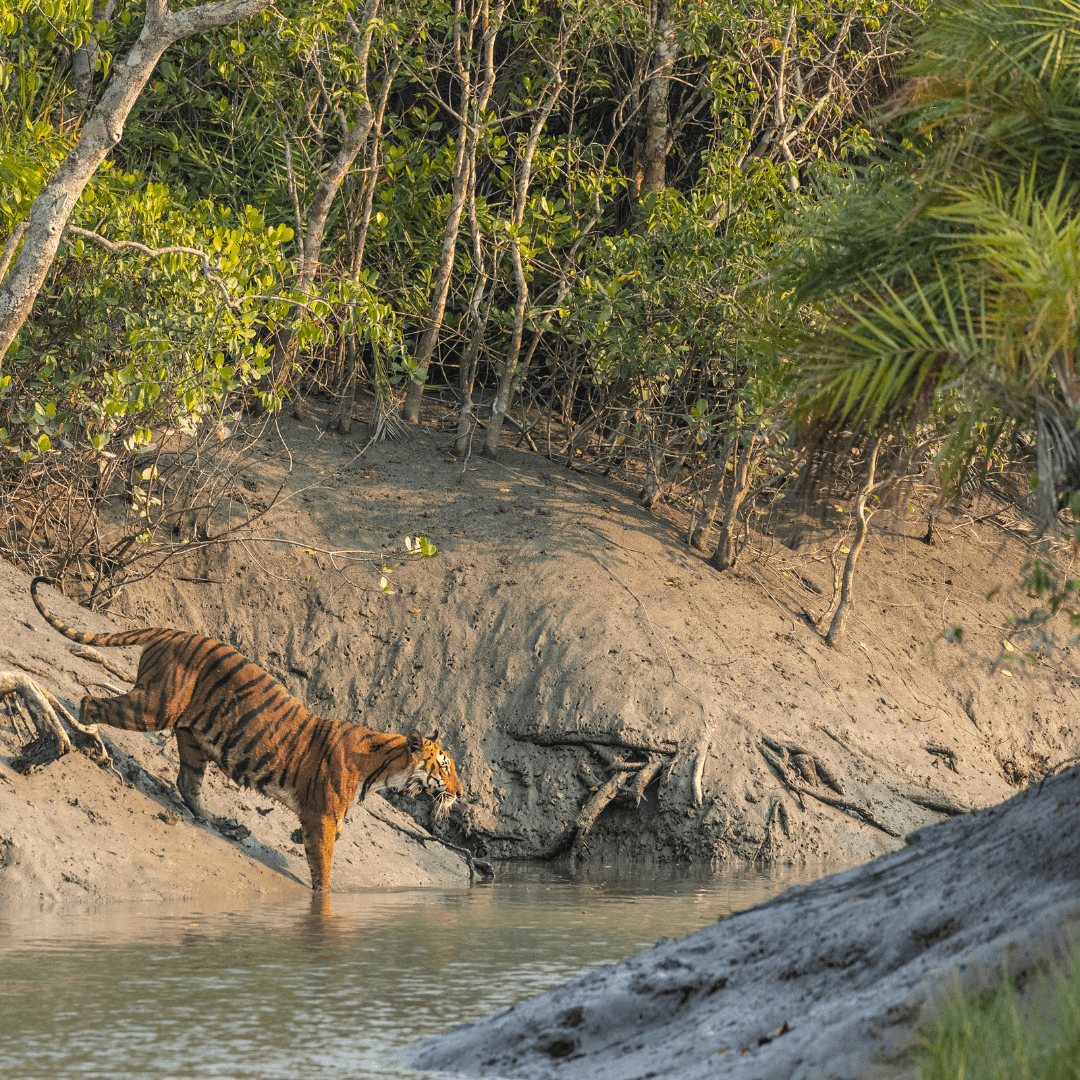Sunderbans National Park
Exploring the Enchanting Sundarbans National Park
Introduction:
India is a land of diverse landscapes and rich biodiversity, and nestled in the southeastern fringe of the Indian state of West Bengal lies one of its most enchanting corners - the Sundarbans National Park. Spanning across a sprawling 40,000 square kilometers, the Sundarbans is a UNESCO World Heritage Site and a mesmerizing blend of mangrove forests, winding creeks, and abundant wildlife. This captivating ecosystem is not only a biosphere reserve and national park but also a tiger reserve, making it a haven for nature enthusiasts and wildlife lovers alike. Join us on an immersive journey as we unravel the hidden treasures and popular tourist spots within the Sundarbans National Park.
The Magnificent Sundarbans:
The Sundarbans, aptly named "beautiful forests" in the local language, is a vast delta formed by the confluence of the Ganges, Brahmaputra, and Meghna rivers. Stretching from the Hooghly River in West Bengal, India to the Baleswar River in Bangladesh, this natural wonderland boasts a unique ecosystem teeming with life. The majestic mangrove trees, adapted to thrive in brackish waters, stand tall on the mudflats during low tides and become submerged during high tides. One of the most distinctive features of the Sundarbans is the Sundari trees, which dominate the landscape and display remarkable aerial roots that aid in respiration during waterlogging.
Safari Gates and Zones:
To explore the captivating wilderness of the Sundarbans, tourists can embark on thrilling boat rides that take them through the intricate network of creeks and tributaries. Several safari gates and zones have been established to ensure a safe and immersive experience for visitors. Sajnekhali, known for its bird sanctuary, offers excellent accommodation facilities and serves as a popular starting point for exploration. Watch towers strategically located in Sajnekhali, Sudhanyakhali, Netidhopan, Haldi, and other places provide breathtaking glimpses of the regal tigers that roam these forests.
Tourist Spots and Places of Interest:
Sajnekhali: Located within the Sundarbans, Sajnekhali is renowned for its bird sanctuary. Here, visitors can witness a myriad of avian species and enjoy the melodic symphony of their calls. The Mango Interpretation Center is another highlight, offering valuable insights into the flora and fauna of the Sundarbans.
Bhagbatpur Crocodile Project: Situated in the Bhagbatpur area and easily accessible from Namkhana, this crocodile breeding farm is a must-visit. It serves as a hatchery for the largest estuarine crocodiles in the world, providing a unique opportunity to observe these magnificent reptiles up close.
Piyali Island: Serving as the gateway to the Sundarbans, Piyali Island is a developing tourist complex located 72 kilometers from Kolkata. It offers a range of activities, including nature walks, boat rides, birdwatching, and an opportunity to immerse oneself in the rustic village life.
Nearby Attractions:
Lothian Island Bird Sanctuary: Located in the South 24 Parganas district of West Bengal, this wildlife sanctuary is famous for its diverse avifauna. Bird enthusiasts can spot captivating species such as the Black-Capped Kingfisher, Curlew, White-Bellied Sea-Eagle, Tern, and Whimbrel.
Hiran Point: Situated in the southernmost part of Sundarbans and the Khulna district, Hiran Point is a tranquil spot surrounded by picturesque water bodies. It offers a soothing ambiance and is a popular attraction within the Sundarbans.
Halliday Island: Located in the southern zone of the Sundarbans, Halliday Island attracts numerous tourists eager to spot the barking deer that inhabit the vicinity. It provides a glimpse into the untamed wilderness of the area.
Tin Kona Island: Another hotspot for wildlife sightings, Tin Kona Island is renowned for its population of tigers and deer. This island showcases the true essence of the Sundarbans and offers an exhilarating experience for wildlife enthusiasts.
Travel Information:
Reaching the Sundarbans National Park is convenient, with Kolkata serving as the main transportation hub. The capital city is well connected to major cities in India through road, rail, and air networks. Kolkata also offers international connectivity to destinations such as Bangkok, Singapore, Hong Kong, Kathmandu, and Dhaka. From Kolkata, travelers can reach various accessible points near the Sundarbans, including Godkhali Port, Koikhali, Namkhana, and Canning. From these locations, motorboats are available to ferry tourists to the Sundarbans National Park, ensuring a seamless journey.
Conclusion:
The Sundarbans National Park, with its breathtaking beauty and diverse wildlife, is a jewel in India's crown of natural wonders. From the mystical mangrove forests and meandering waterways to the regal tigers and awe-inspiring avifauna, every moment spent in this enchanting ecosystem leaves an indelible mark on visitors. Whether it is exploring the bird sanctuary at Sajnekhali, witnessing the crocodile breeding project at Bhagbatpur, or immersing oneself in the tranquility of Piyali Island, the Sundarbans offers an array of unforgettable experiences. So, pack your bags, embark on an extraordinary adventure, and uncover the captivating "Korners of India" that await you in the Sundarbans National Park.


